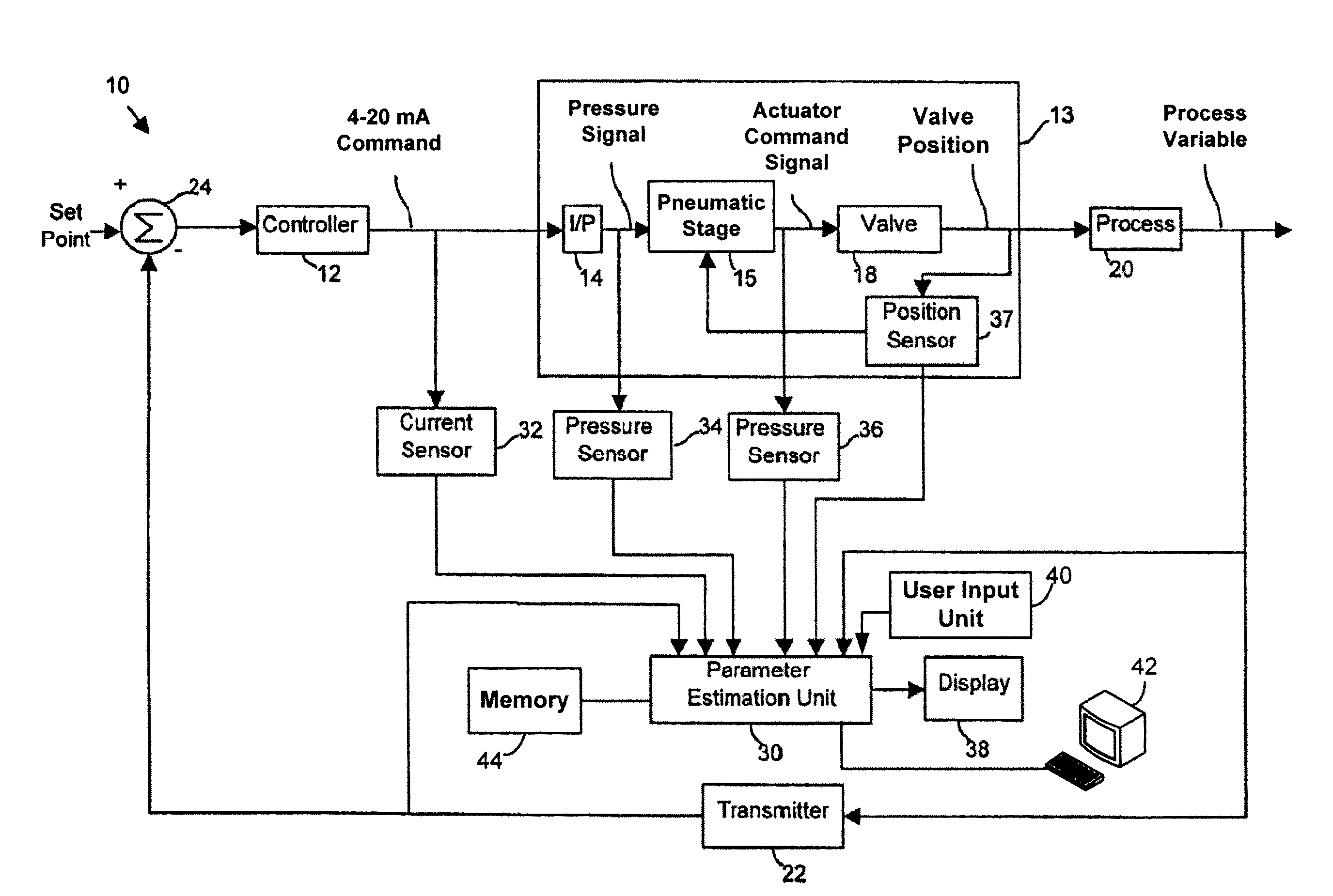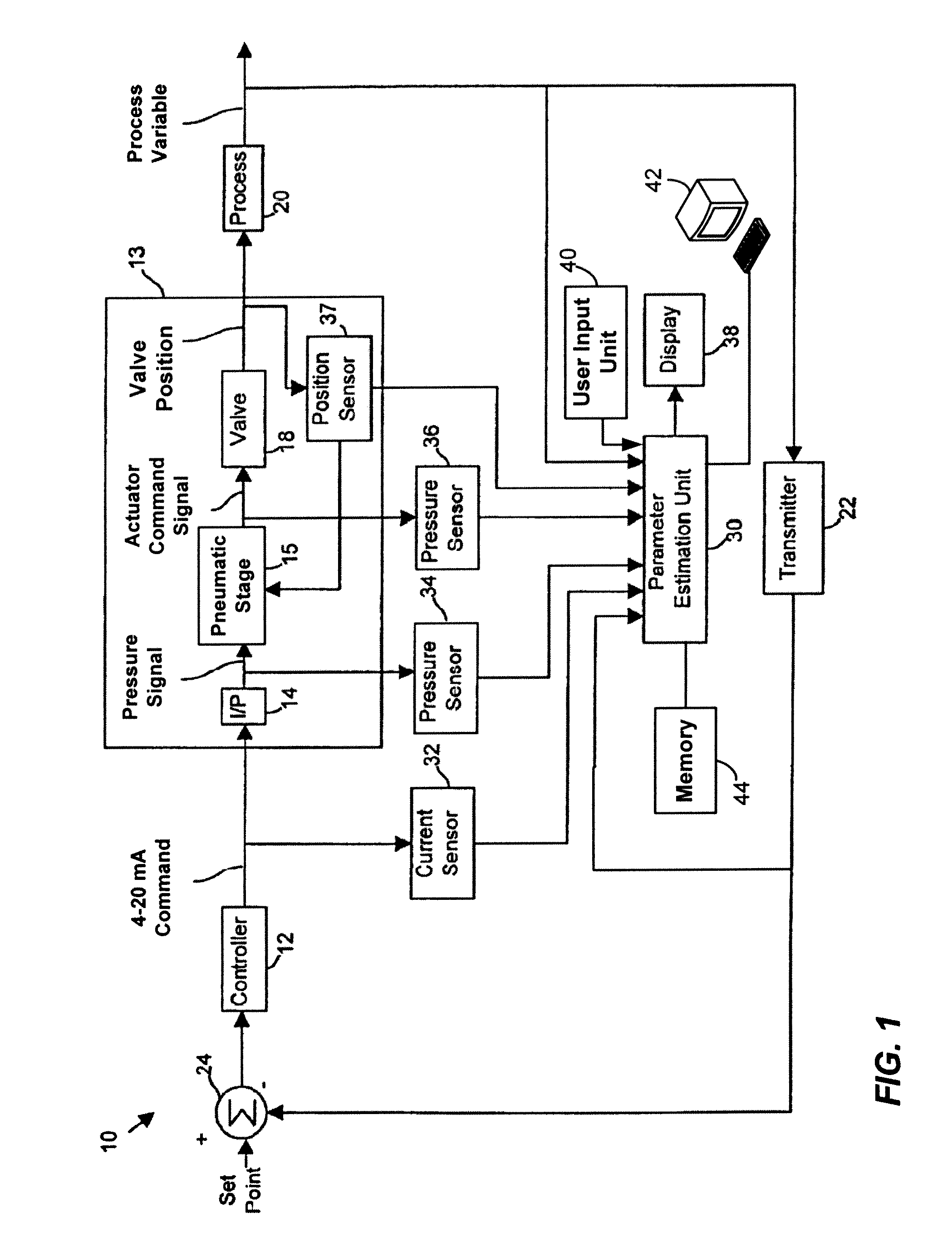Estimation of process control parameters over predefined travel segments
a technology of process control and parameter estimation, applied in the field of process control networks, can solve the problems that the individual control devices of one or more process control devices cannot be tuned out of the control loop, the system experiences “instability”, and the poor control loop performance may still be caused, so as to facilitate visual and statistical comparison
- Summary
- Abstract
- Description
- Claims
- Application Information
AI Technical Summary
Benefits of technology
Problems solved by technology
Method used
Image
Examples
Embodiment Construction
[0027]Referring to FIG. 1, a single-input, single-output process control loop 10 is illustrated as including a process control system 12 that sends, for example, a 4 to 20 mA command signal to a process control device 13 such as a control valve assembly. The process control device 13 is illustrated as including a current-to-pressure transducer (I / P) 14 that (typically) sends a 3 to 15 psig pressure signal to a valve pneumatic stage 15 such as a pneumatic positioner and actuator or a pneumatic relay and / or an actuator which, in turn, pneumatically controls a valve 18 with a pressure signal (air). Operation of the valve 18 controls the articulation of a movable valve member disposed therein (not shown) which, in turn, controls a process variable within a process 20. As is standard, a transmitter 22 measures the process variable of the process 20 and transmits an indication of the measured process variable to a summing junction 24. The summing junction 24 compares the measured value of...
PUM
 Login to View More
Login to View More Abstract
Description
Claims
Application Information
 Login to View More
Login to View More - R&D
- Intellectual Property
- Life Sciences
- Materials
- Tech Scout
- Unparalleled Data Quality
- Higher Quality Content
- 60% Fewer Hallucinations
Browse by: Latest US Patents, China's latest patents, Technical Efficacy Thesaurus, Application Domain, Technology Topic, Popular Technical Reports.
© 2025 PatSnap. All rights reserved.Legal|Privacy policy|Modern Slavery Act Transparency Statement|Sitemap|About US| Contact US: help@patsnap.com



